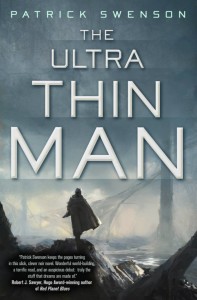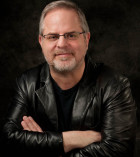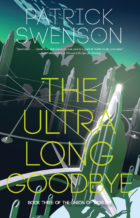Most writers have a day job. If lucky, they might have a working spouse.
I have a day job. I teach English Language Arts at a high school, and I’ve been teaching now for 28+ years. My writing languished for many, many years. Admitedly, I threw it off the rails myself, in 1995, when I began a small press magazine called Talebones. And then, in 2000, a small press book line, Fairwood Press. And then…
Teaching is draining. Heck, most career jobs are draining, aren’t they? Anyway, suffice to say, I wasn’t writing. When I sold my novel last year to Tor, my agent said that my editor had told him he’d been waiting for this book for 15 years! Ooops. Had it been that long from the time I’d sent the same editor a (thankfully unpublished) novel? Uh, actually? It was longer. The same 25,000 words of The Ultra Thin Man had sat there, waiting. Oh, indeed, I worked on it. The same 25,000 words, that is. By the time I’d pick the book up again, a year or two later, I was definitely not happy with those 25K words. REWRITE. A year later….Ack, no. What was I thinking? REWRITE.
But there was something there. I’m not an outliner, so I’m not sure where the book was going, but it seemed promising. Still, I wasn’t making time to write. Something had to go. I had to stop saying YES to everything thrown my way. In 2009, I decided to say goodbye to Talebones. I started writing a little bit that summer, during my summer break. Not a lot, and much of it was back to that first 25K again, but there was some new stuff.
The new school year started. I was going to be busy again. I might have quit the magazine work, but I still found myself pressed for time. I needed a consistent block of time to write every day. What to do? Here it is: (Don’t tell on me, fellow English teachers at Riverside reading this…) Between 2007-09, I worked with a “1.2” contract. That is, instead of teaching 5 periods and having 1 planning period (1.0 equivalent), I taught classes all six periods, adding the .2. It was extra money, and the administration found it more advantageous than hiring a part-time teacher. During those two years, I learned to plan outside of the school day: after school, before school, Sunday nights…whenever I could, because I knew I wouldn’t have my planning period.
With that in mind, I decided to approach the 2009-10 schedule the same, even though I was no longer working the 1.2. I decided: I’m going to keep planning and grading the way I’ve done the past two years, even though I have my planning period back. I was going to take that same 55 minutes every day, 3rd period, and write. More often it was 45-50 minutes. But I was not going to plan during that time. Trust me, I put in plenty of hours planning and grading outside the school day–more than usual by a long shot.
September came around, and I threw a seemingly impossible goal out there: to finish the first draft of the novel before New Year’s. I made it! 75,000 words in less than 4 months after letting the first 25,000 words sit there all lonely-like for years.
So I’m here to tell you that if you want to write, or engage in whatever creative endeavor suits your fancy, or any seemingly time-consuming tasks you want to do outside your work day, you can do it. It doesn’t have to be hours and hours at a time. I’m not contracted for a second book as yet, and I’ve not yet gone back to that one-hour-each-day-at-work schedule with the determination I did in 2009, but at least while I’m waiting for my first novel to come out, I’m writing with more regularity.
I can’t afford to wait 15 years to finish the next book.




Recent Comments